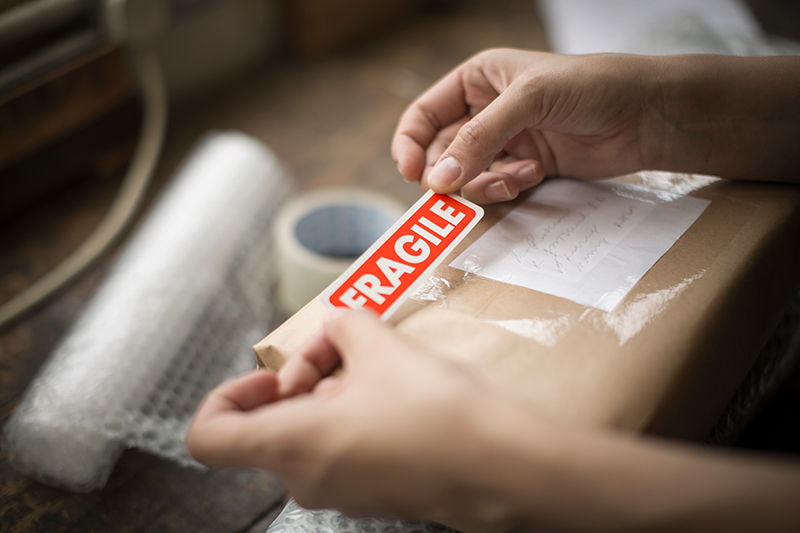
The cost of merchandise ‘return’ deliveries in the Asia-Pacific region was $256.4 billion USD in 2019. Worldwide it reached over $1 trillion USD.
Returns are more than just a pain point for ecommerce businesses, they’re downright costly.
While we can’t expect to eliminate product returns completely, how we manage returns can be the difference between growing a loyal repeat-customer base, and losing customers that can easily shop elsewhere online.
Ultimately, we want to focus on a customer’s lifetime value over individual sales. In many cases, we’re better off wearing the cost of an occasional return and keeping the customer happy (and coming back), than refusing returns and losing them forever.
Here are a dozen ways, across five key areas, to minimise returns and increase your share of happy customers.
12 Ways to Reduce Returns Before, During and After Shipping
There are many things you can do to reduce the chances of dissatisfied customers returning your products. But the most important place to start is to educate them about your products and return policies before they even make a purchase.
Information
1. Expand Product Descriptions
Make sure your product descriptions supply all the critical information needed to make an informed decision. It pays to set up a checklist as ‘best-practice’ for your team to follow every time they add a new product to your listings.
Rather than trying to get everyone to buy your products, focus on getting the right people buying them. Providing accurate information allows customers to self-select if your product is the right match for them ahead of time. Failing to sort the right customers from the wrong ones may be great for initial sales, but it can result in a high return-rate, and lead to negative perceptions of your brand.
The more your customer knows, the more likely they are to make a good purchasing decision, and be happy with their order when it arrives.
2. Clarify Dimensions
It’s important that your customers understand item sizes. If items are much bigger than they anticipated, or too small, they may end up being returned.
Whether it’s furniture, fashion or frisbees, providing accurate dimensions will help your customers understand if what they are buying is fit for purpose and understand the related shipping costs.
Sometimes customers have trouble visualising dimensions in their head, even when you clearly state measurements in centimetres or inches. To avoid mis-measurement, you can offer images of your products compared to everyday items.
Art or print suppliers, for example, often provide photos of their prints on a wall, or in the hands of real people for an accurate size-comparison. Many florists display different bouquet sizes in a vase online for scale.
3. Explain Sizing Options
Ill-fitting clothing is one of the most common reasons for product returns in the fashion industry. To help customers find the right fit, you’re best to supply them with a prominent guide that outlines clothing sizes.
Along with the sizing guide, you should consider offering measurement instructions. These instructions should come complete with images that show how and where to measure for sizing.
Without clear instructions, customers may ‘guesstimate’ their size based on purchases from other stores. When the clothes show up at their door, they’ll simply return all the clothes that don’t fit.
To avoid this, make it easy for your customers to determine their size on your website or app by providing clear, visual measurement guidelines and even a reference to what size and height models are for comparison.
4. Address Frequently Asked Questions
The longer you’re in business, the more time you’re going to spend answering the same questions over and over again. To save time — and reduce return rates from customers who simply make a purchase and hope for the best — use a list of frequently asked questions (FAQ’s) on your website.
If you sell kitchen and homeware items, for example, and you find a lot of people asking whether your mugs are dishwasher-safe, you should include the answer in an FAQ section on relevant product and/or category pages.
If you have a long list of FAQ’s, consider using a chatbot that can be pre-programmed with responses to hundreds of questions. These tools not only save you time but can provide a better customer service experience by having answers readily on hand, rather than having to search your site.

For clothing retailers, provide guidelines to help customers take their own measurements and compare them with your size chart.
Visuals
5. Upgrade Your Photography
A high-quality photo (optimised for the web) will allow your customers to closely examine your products before purchasing.
Multiple angles, detail shots and the ability to zoom in will give your customers a better idea of exactly what you’re selling. Make sure to take multiple, well-lit photos using a good quality camera to capture all the important details. This allows customers to get a better understanding of product texture, finish and fabrication.
It’s up to you whether you use a plain white background, or something a little more interesting when photographing your products.
A white background may not be particularly interesting, but it will offer you the clearest, least distracting, and most colour-accurate photos. A more interesting image, on the other hand, may give a better idea of what your products look like in the ‘real world’. You may wish to use a combination of the two.
6. Use Short-Form Video Clips
Videos are a brilliant way of displaying many products. They not only show your customers what your products look like, but what they can do and how to use them.
Showing products ‘in action’ can help answer many of the questions customers have about them. Videos can help customers imagine themselves using a product, while also helping them decide where it would fit into their lives.
This is particularly effective for the clothing and apparel category where customers like to see how the product moves or fits on the body.
As a medium, video not only resonates with customers, it can also be a powerful way to attract site visitors and shoppers, by cross-posting to YouTube and other video and social media platforms. (You know Google owns YouTube, right?)
Content
7. Refine Your Sales Content
The more your customers know about the features and benefits of your product, the easier it will be for them to decide whether or not it’s right for them.
Sales content such as case studies, online product manuals, ‘how to’s’ and video demonstrations allow you to educate your customers about your products before they hit the ‘buy now’ button.
Don’t try to make every sale; instead, focus on making the right sales. Provide customers with a variety of information that helps them make good purchasing decisions, and you’ll save yourself on costly returns later.
8. Get Content from Happy Customers
Word-of-mouth is very powerful. As hard as you try, some customers will never trust business as much as they’ll trust random strangers who say they like your products.
User-generated content isn’t just free marketing for your business, it’s a valuable tool to help people make good buying decisions.
Encourage your customers to write testimonials and reviews, post pictures and make videos of themselves using your products. External reviews offer an excellent, non-biased opinion that will help potential customers work through the pros and cons of your products.
The more unbiased material about your product there is out in the marketplace, the clearer the picture your customers will have of whether your products will suit their needs.
Customer Interaction
9. Be (Extra) Responsive
Your customers will have questions about your products. Answering these questions will not only help you make a sale, they’ll also help you weed out people who aren’t the right fit.
Answer emails. Respond to queries and chats. Reply on social media. To help prevent leaving customer queries lingering, set up autoresponders to let them know when they can expect a response or the best method to get in touch.
10. Seek Out Customer Feedback
Customer feedback is a valuable resource for improving your product range and acts as a powerful fault-finding tool.
Reviews, testimonials and surveys are all great ways of collecting feedback from your customers to help you pinpoint potential issues with your products.
Your customers can also help you recognise any inaccuracies in your product descriptions or in your advertising that may have been misleading to them when they made the purchase.
Delivery
11. Use Appropriate Packaging
Damaged goods are a common cause of product returns. The better you can protect your products in the delivery process, the lower the chances of your customers having to return them.
When it comes to your bottom line, damaged goods are a financial ‘double-whammy’, as you not only lose the money on shipping, but the chances of being able to resell the item are next to none. It’s important to avoid the situation entirely by using appropriate packaging.
Review your current product packaging to determine if you are over-packaging or under-packaging your products. Under-packaging increases the chances of damaged goods arriving at your customer’s door, while over-packaging can negatively impact a customer’s view of your brand and can artificially inflate your shipping costs.
Protecting your products in transit should be your first priority, but being reasonable about how you package them is almost as important. Always check the packaging requirements for your product type.
For fragile or breakable items, you should label your packaging accordingly. Labels like ‘fragile’, ‘handle with care’, ‘this way up’ or ‘live plant’ can ensure that courier companies take extra care when handling your items.
Making sure your products arrive in one piece is vital to reducing product returns.
12. Verify the Outgoing Product
Double, triple and quadruple check that you’re sending the right product to the right person. Sending the wrong colour, the wrong size, or the wrong item entirely is a sure way to increase your product return rate.
Implement a cross-checking system at the order fulfillment and shipping label stage. You can waste a lot of money fixing mistakes that could have easily been avoided. Mixups can also have a very serious impact on your brand’s image, and reduce the chances of customers coming back to you in the future.
As they say, ‘measure twice, cut once’.
A Bit of Extra Care Reduces Product Returns
Product returns are a part of doing business for retailers, but they can be particularly expensive to ecommerce brands. The cost of shipping and reshipping can really add up for a business, while negative reviews and unhappy customers can impact your brand’s public perception and dampen sales.
While you may never be 100% free of product returns, you can significantly reduce their number by focusing on clear communication, accurate information, and extra care when packaging and shipping your items.
Whether you’re shipping items out or getting them shipped back, Transdirect will get your products where they need to go
Product returns can be painful, but shipping them shouldn’t be. Transdirect only works with the most reliable courier companies to ensure that your products get where they need to go as quickly and safely as possible.
Sign up now to our Free Member Account and save up to 30% on shipping.


